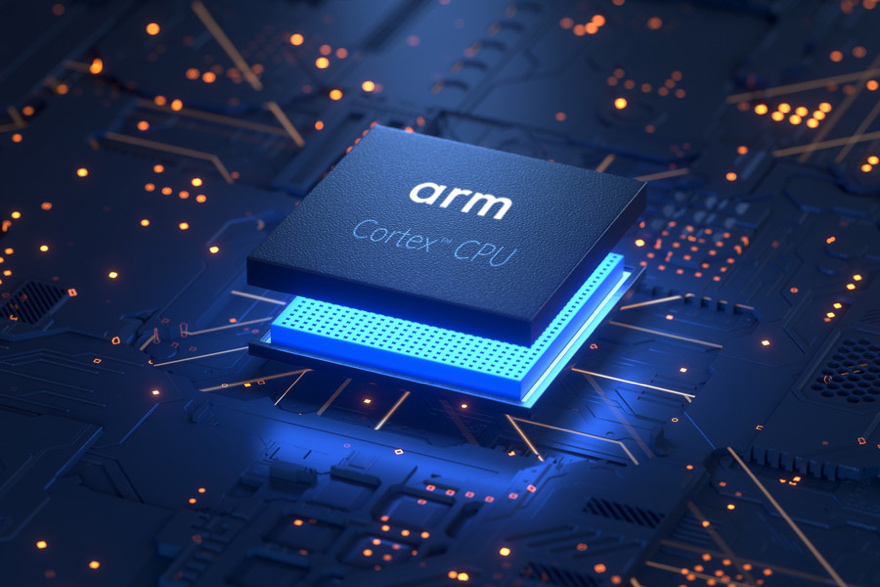Editing by Greg Gao
ARM, the global CPU core giant, recently won a record bidding order for 14,710 ARM-powered servers from China Mobile, the world's largest mobile network operator. This order is undoubtedly a major boost for the ARM architecture striving to enter the server field.

It is the first time that China Mobile has clarified the number and proportion of ARM server purchases in cloud computing equipment centralized procurement. The order for ARM servers exceeds one-third of the total in the procurement scale and amount.
According to statistics from research firm IDC, sales of ARM-based servers in 2020 increased significantly by 430.5%, which is a staggering achievement despite its low market share.
Huang Letian, associate professor of the School of Electronic Science and Engineering at the University of Electronic Science and Technology of China, pointed out: "ARM servers are getting more and more attention mainly because of the need for differentiated competition. Compared with x86, ARM-based hardware design ecology is more open and resourceful and can provide more diversified options to meet customized needs."
In 2008, ARM began making forays into the server market. However, under many unsatisfactory conditions, ARM server chips made by AMD, Broadcom, Cavium, Qualcomm, Nvidia, Samsung, and other chip designers fail to meet expectations.
The breakthrough came from Amazon when the global cloud computing giant launched its first self-developed ARM architecture-based processor chip, Graviton, in 2018. It is also the result of Amazon's acquisition of ARM chip designer Annapurna Labs. The cost of running applications on Graviton is 45% lower than x86-based processors from Intel or AMD.
A year later, the second-generation server chip Graviton 2 arrived. It is based on the 64-bit ARM Neoverse N1 micro-architecture design, the first ARM CPU architecture specifically designed for data centers. Compared with the same level x86 instances, Amazon EC2 M6g, C6g, and R6g instances powered by AWS Graviton 2 have a 40% increase in cost performance.
Chinese technology giant Huawei also launched research and development for ARM-powered server chips. It released the Kunpeng 920 chip in 2019, based on the ARM V8 architecture, of 7nm process, with performance exceeding the industry benchmark by 25%, and its energy efficiency is 30% better. The company also launched Taishan servers using this processor.
Huawei's rotating chairman Xu Zhijun commented that "The progress of Kunpeng ecosystem construction has exceeded our expectations." There are currently 12 vendor partners that have launched Kunpeng-powered servers and PC products. More than 4,500 solutions from about 2,000 partners have passed the Kunpeng compatibility test certification.
In cloud computing, more and more edge data centers are needed, which brings higher requirements in latency, heat dissipation, and power consumption.
Phytium Technology Co., Ltd (飞腾信息技术有限公司), a Chinese fabless semiconductor company that designs ARM-based microprocessors, has obtained the permanent authorization of ARM V8 instruction set architecture. It launched a new generation multi-channel server chip Tengyun S2500 based on ARM architecture.
Meanwhile, as the builder of the entire system, ARM is also accelerating the pace of progress. This year, ARM has innovated the server chip platform Neoverse, introducing the V1 and N2 series, and its processing capacity has increased by 40% to 50% compared to the previous generation N1. The company claims that it delivers industry-leading performance per watt at a lesser cost than rival chips from Intel and AMD, both of which use the X86 instruction set architecture.
According to industry observers, this represents a turning point in the server market. ARM-powered processors is approaching Intel and AMD processors in performance, and it will maintain an annual performance improvement of 25% to 30%, significantly surpassing those of Intel and AMD.
ARM servers are seen as a power-efficient alternative to Intel's x86-based systems for companies looking to cut electric bills in data centers. ARM server chips have been around for years but have failed to register an impact because of hardware and software ecology problems.
ARM, which is aware of this problem, has been making up for this. After several years of hard work, the situation has changed. Currently, all large operating systems, such as Linux, BSD, and windows, can be supported by the ARM architecture. Virtualization tools such as Docker, VMware, KVM, and Kubernetes can all run on the ARM architecture. Programming languages such as CUDA and Java can also be supported by ARM.
In addition to the improvement of technological ecology, the market environment has become more friendly to the ARM architecture, especially in China, with more companies and institutions engaging in developing and manufacturing self-dependent and secured information technology equipment and software in the wake of geopolitical changes.
Huatai Securities, a leading Chinese wealth management firm, estimates that the potential market of server CPU is about RMB24 billion ($3.73 billion). Since 2020, customers in multiple industries have started purchasing Chinese domestic ARM servers.
In May 2020, Agricultural Bank of China bought 2,000 TaiShan servers based on Kunpeng processors from Beiming Software; In July 2020, China Guangfa Bank also announced hardware and software procurement plans, including Kunpeng servers from Huawei; In 2021, New H3C Group, a leading Chinese IT infrastructure provider, won the bid from China Everbright Bank to equip the bank's first new-generation IT infrastructure with ARM architecture.
With industry customers such as banks, power grid operators, and mobile network operators taking the lead in ARM server procurement, the ARM ecosystem application in China is expanding.
Industry insiders pointed out that the ARM processors' low power consumption, high stability, small size, long battery life, and high integration with CPU chips trigger a new round of the underlying architecture innovation in China's IT industries.
However, ARM's market share in the server segment remains negligible, and the ecosystem remains dominated by x86 Xeon and Opteron parts from Intel and AMD. There are still many daunting challenges, one of which is the high price. One industry insider told JW Insight reporter that the price of a single 64-core ARM server CPU is RMB10,000 ~ 20,000 ($1553~3106), and the operating system that is compatible with it is not cheap either.
" After all, server/cloud computing is to serve application software, and there is the lack of support for this kind of software. It is a big shortcoming that cannot be solved in a short time." Huang Letian said. But it seems that a consensus has been reached in Chinese industries to adopt ARM architecture.

